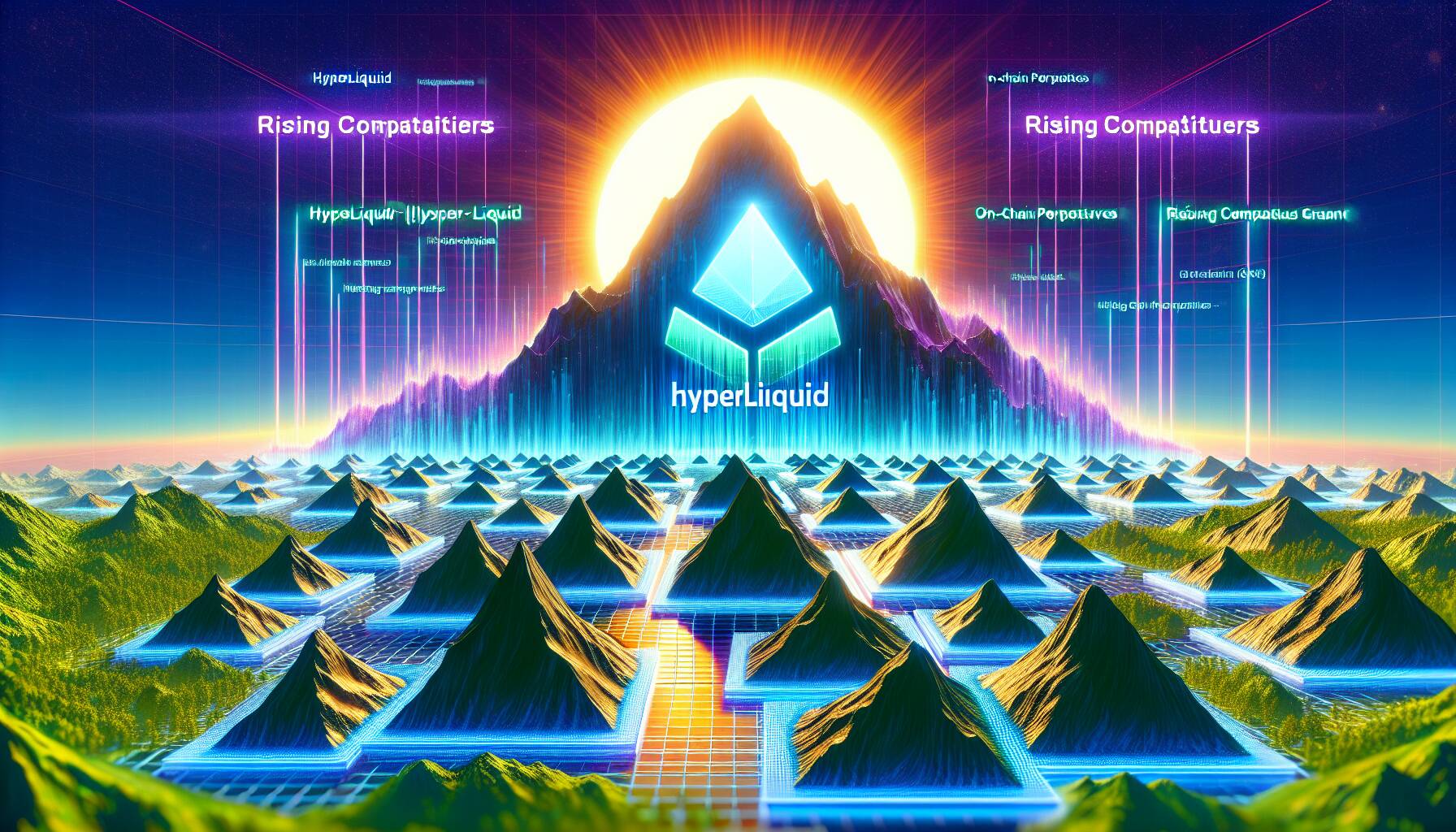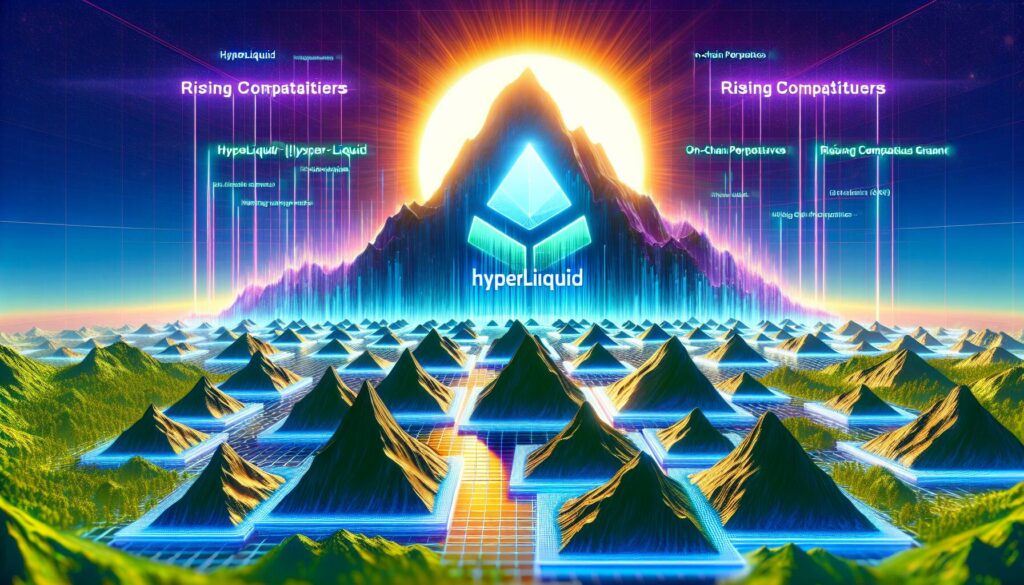The landscape of the on-chain perpetuals market is experiencing a significant shift, as long-time leader Hyperliquid faces increasing competition from emerging platforms like Lighter and Aster. Once dominating this space with a remarkable 71% market share in May, Hyperliquid’s slice of the pie has now diminished to 38%, a change revealed by notable data from pseudonymous Dune Analytics user @uwusanauwu.
In contrast, competitors are making notable gains: Lighter, backed by a16z, has surged to a 16.8% market share, while Binance Labs-supported Aster follows closely at 14.9%, up from modest beginnings just months ago. This rapid expansion showcases the dynamic nature of the on-chain perpetuals market, which enables decentralized trading of perpetual futures contracts directly on the blockchain, ensuring both transparency and immutability.
“The on-chain perpetual market has experienced rapid growth, with cumulative trading volume nearing $700 billion over the past four weeks and daily activity reaching $42 billion.”
As the number of protocols has surged from merely two in 2022 to an impressive 80 as of today, this scenario highlights an essential aspect of capitalism: a thriving market attracts new entrants, fostering intense competition that can dilute the original pioneers’ market share and profitability. The crypto industry’s unique landscape, characterized by minimal barriers to entry, empowers innovative newcomers to challenge established players.
Recently, a competitive dynamic has emerged between Hyperliquid and Aster, with both platforms seeking to attract users through strategic offerings. Hyperliquid’s recent listing of Aster’s native token, ASTR, allows traders to leverage their positions with 3x leverage. In retaliation, Aster has introduced Hyperliquid’s HYPE perpetuals with a staggering 300x leverage option, underscoring the fierce battle for market dominance.

Impact of Emerging Platforms on the On-Chain Perpetuals Market
Key points highlighting the current shifts in the on-chain perpetuals market:
- Market Share Decline of Hyperliquid:
Hyperliquid’s market share has decreased from 71% to 38% amidst rising competition.
- Growth of Competitors:
Lighter and Aster have gained significant market shares of 16.8% and 14.9%, respectively.
- Volume of Trading:
The on-chain perpetuals market has cumulatively registered nearly $700 billion in trading volume recently.
- Rapid Growth of Protocols:
The number of protocols has skyrocketed from 2 in 2022 to over 80 today, demonstrating increased competition.
- Innovative Trading Features:
Recent offerings include leveraged trading options, such as Hyperliquid’s 3x leverage on ASTR and Aster’s 300x leverage on HYPE.
- Decentralized Market Characteristics:
The on-chain perpetuals market ensures transparency and immutability, attracting a variety of traders.
The ongoing battle for market dominance between Hyperliquid and its competitors could ultimately impact traders’ choices and the potential profitability of their investments.
Hyperliquid Faces Increased Competition in the On-Chain Perpetuals Market
The landscape of the on-chain perpetuals market is rapidly changing, as traditional leader Hyperliquid faces mounting competition from rising platforms like Lighter and Aster. Once dominating with an impressive 71% market share, Hyperliquid has seen this figure slip to 38%, highlighting a significant shift in trader preferences and market dynamics.
Competitive Advantages: Emerging platforms like Lighter and Aster are capitalizing on their backing from prominent investors such as a16z and Binance Labs, respectively, allowing them to enhance their visibility and attract user interest. This strategic financial support can help these platforms innovate quickly, introducing features like lower fees or advanced trading tools that appeal to both new and experienced traders. Their ability to provide users with enhanced leverage options, such as Aster’s offering of up to 300x leverage, showcases a tactical edge in attracting high-risk traders.
Disadvantages: However, the influx of competition can also create instability within the market. New entrants might struggle to maintain user trust and satisfaction amid growing volatility. The rapid evolution of protocols and offerings may lead to confusion for traders, potentially turning them away from the on-chain perpetuals space altogether. Moreover, the increased competition could dilute brand loyalty for longstanding players like Hyperliquid, forcing them to reconsider their strategies to retain users.
This competitive environment is beneficial for traders looking for variety and innovation in their trading platforms, as they can leverage different offerings to maximize their strategies. However, it also presents problems for established leaders, who must now focus on differentiation and improved user experiences to maintain market relevance. The relentless growth of new protocols may place additional pressure on existing players to innovate or risk losing market share.

















